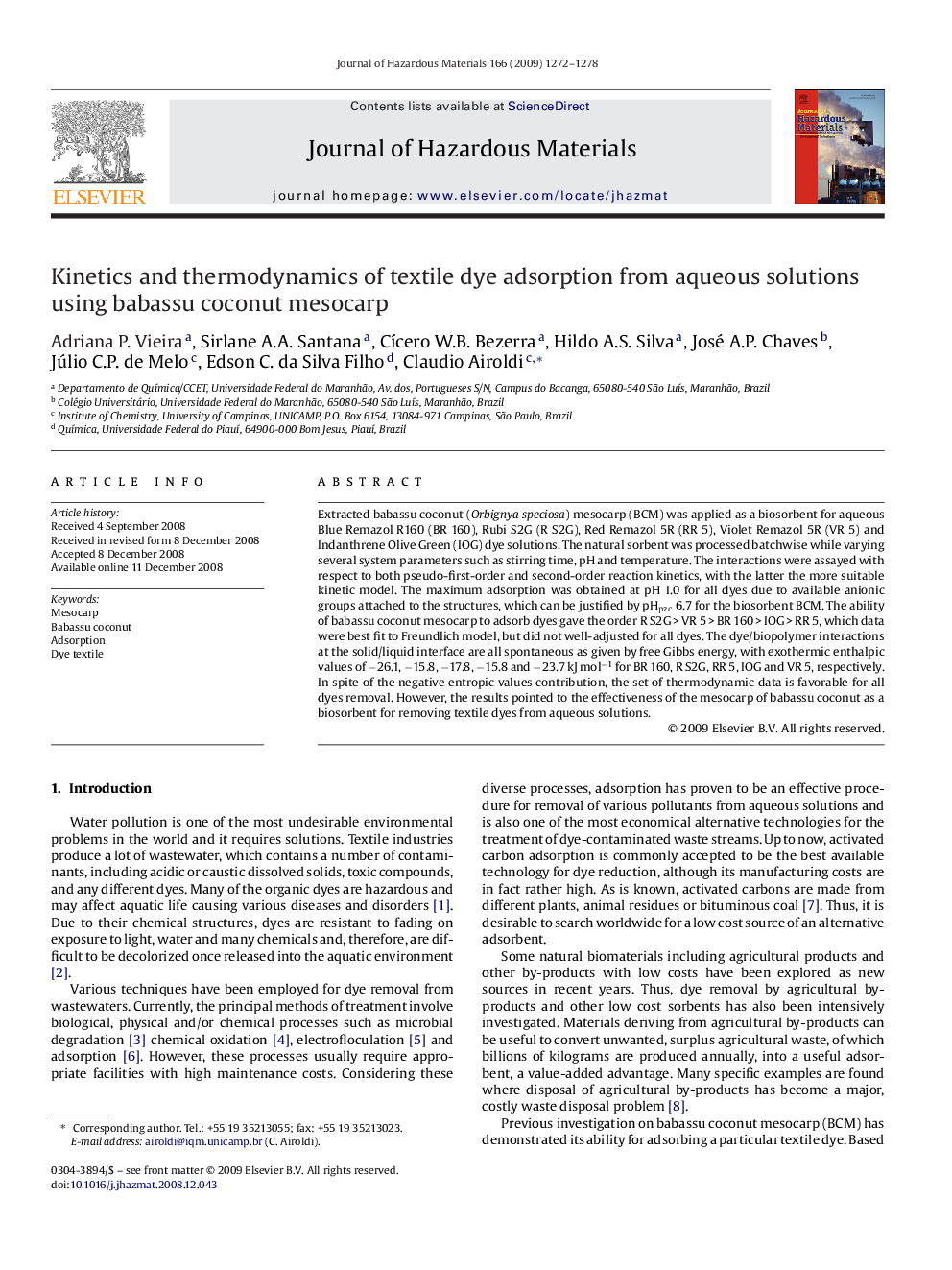| Article ID | Journal | Published Year | Pages | File Type |
|---|---|---|---|---|
| 582082 | Journal of Hazardous Materials | 2009 | 7 Pages |
Abstract
Extracted babassu coconut (Orbignya speciosa) mesocarp (BCM) was applied as a biosorbent for aqueous Blue Remazol R160 (BR 160), Rubi S2G (R S2G), Red Remazol 5R (RR 5), Violet Remazol 5R (VR 5) and Indanthrene Olive Green (IOG) dye solutions. The natural sorbent was processed batchwise while varying several system parameters such as stirring time, pH and temperature. The interactions were assayed with respect to both pseudo-first-order and second-order reaction kinetics, with the latter the more suitable kinetic model. The maximum adsorption was obtained at pH 1.0 for all dyes due to available anionic groups attached to the structures, which can be justified by pHpzc 6.7 for the biosorbent BCM. The ability of babassu coconut mesocarp to adsorb dyes gave the order R S2GÂ >Â VR 5Â >Â BR 160Â >Â IOGÂ >Â RR 5, which data were best fit to Freundlich model, but did not well-adjusted for all dyes. The dye/biopolymer interactions at the solid/liquid interface are all spontaneous as given by free Gibbs energy, with exothermic enthalpic values of â26.1, â15.8, â17.8, â15.8 and â23.7Â kJÂ molâ1 for BR 160, R S2G, RR 5, IOG and VR 5, respectively. In spite of the negative entropic values contribution, the set of thermodynamic data is favorable for all dyes removal. However, the results pointed to the effectiveness of the mesocarp of babassu coconut as a biosorbent for removing textile dyes from aqueous solutions.
Keywords
Related Topics
Physical Sciences and Engineering
Chemical Engineering
Chemical Health and Safety
Authors
Adriana P. Vieira, Sirlane A.A. Santana, CÃcero W.B. Bezerra, Hildo A.S. Silva, José A.P. Chaves, Júlio C.P. de Melo, Edson C. da Silva Filho, Claudio Airoldi,
